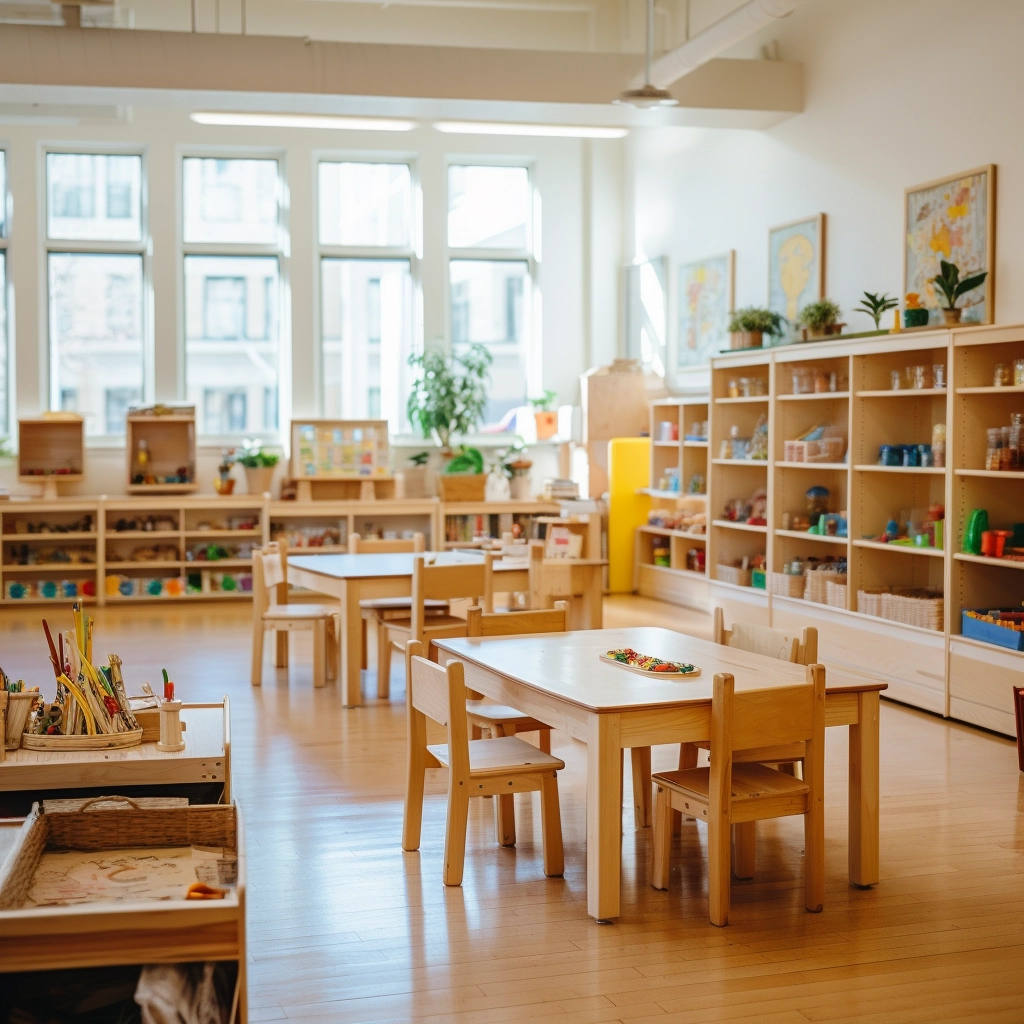What skills do young children need to thrive in life? How do we know if a child is developing “normally”? Are we giving them the proper support in the right areas, or only focusing on surface-level learning? Even experienced educators may overlook critical aspects of a child’s growth without a clear understanding of developmental domains.
The five core developmental domains include physical, cognitive, language, social-emotional, and adaptive. These developmental domains reflect how children grow, learn, interact, and adapt to the world around them. Understanding these areas is essential for designing appropriate learning environments and ensuring each child develops to their full potential.
Each developmental domain works in harmony with the others, shaping the whole child. This article will explore how they interact and why they matter deeply in early education settings.
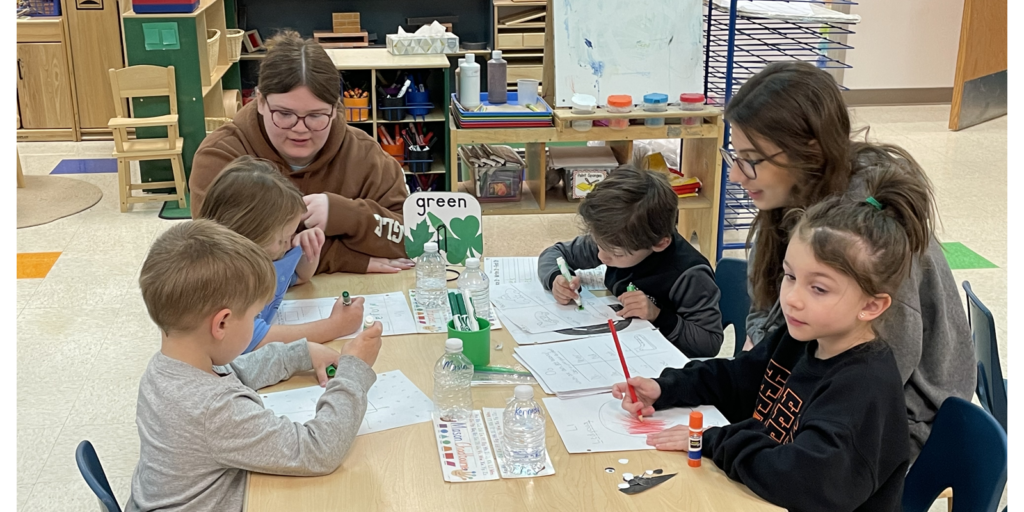
What are the developmental domains?
Developmental domains are the distinct areas where children grow and acquire skills from birth through early childhood. These areas represent the key components of human development. They help educators, caregivers, and developmental specialists observe, guide, and assess a child’s progress. The term domains of development refers specifically to how these areas are categorized and studied in child development theory.
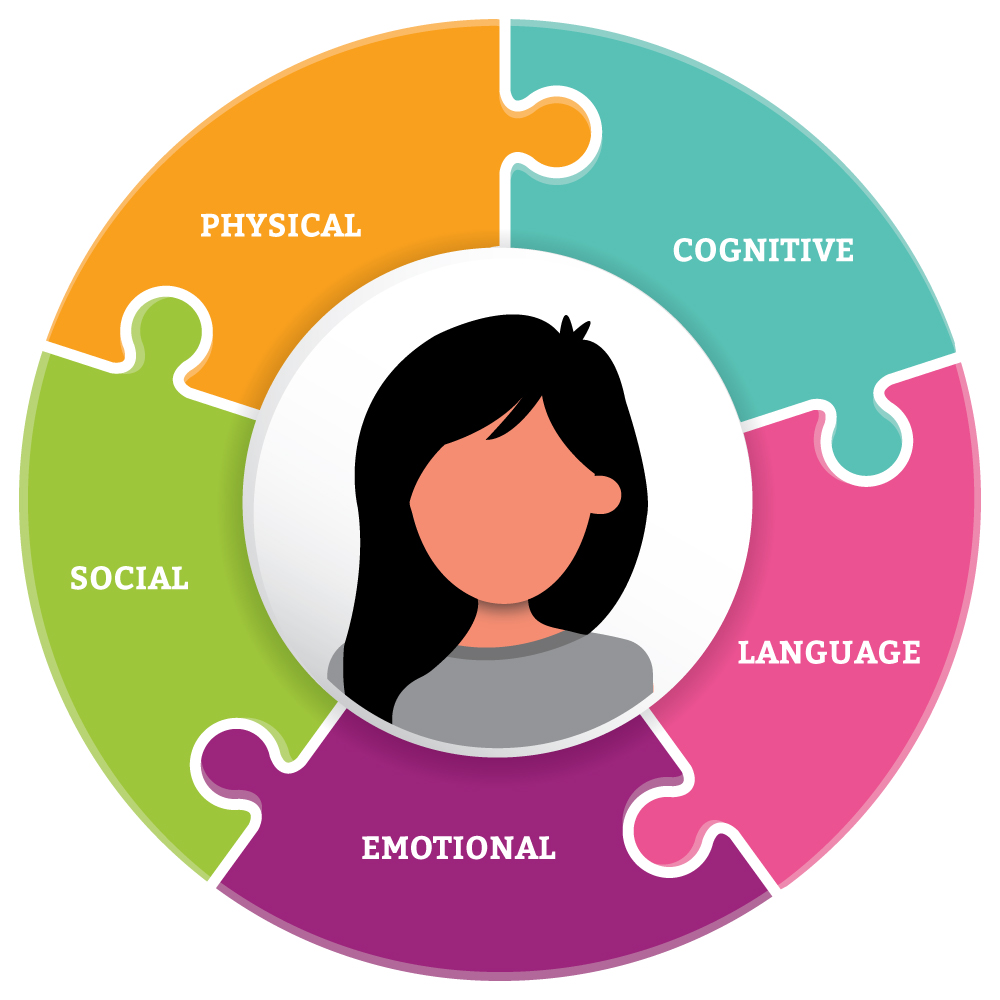
There are five widely recognized developmental domains:
- พัฒนาการด้านร่างกาย – Involves the growth of the body, muscles, motor coordination, and sensory awareness.
- Cognitive Development – Encompasses thinking skills, memory, reasoning, and problem-solving abilities.
- Language Development – Includes receptive (understanding) and expressive (speaking or communicating) language skills.
- Social-Emotional Development – Relates to how children understand emotions, form relationships, and regulate behavior.
- Adaptive Development – Refers to practical life skills such as dressing, eating, following routines, and personal responsibility.
Each of these domains of development is essential and interrelated, though each has its focus and set of observable milestones. Experts use these categories to monitor progress and identify whether a child is developing typically for their age.
In short, developmental domains serve as a framework for understanding how children grow in different but connected areas, allowing for a structured and comprehensive approach to early childhood education.
Why Developmental Domains Matter?
Understanding the importance of developmental domains is critical for anyone involved in early childhood education. These domains act as a lens through which we observe, support, and guide children’s growth. When we consider each domain individually—and how they connect—we make better educational decisions and provide more meaningful learning experiences.
A Framework for Understanding Growth
The concept of developmental domains provides a systematic way to understand child development. Rather than viewing growth as a general or abstract idea, the domains of development organize progress into observable categories: physical, cognitive, language, social-emotional, and adaptive. This framework helps professionals identify strengths, target support, and track milestones more clearly.
Supporting Holistic Education
Children are not just learning to read or count—they are also learning to move, relate to others, and care for themselves. Each child develops across all five developmental domains, not just academically. A well-rounded approach ensures that physical movement, emotional well-being, communication, and life skills are embedded in daily routines. This helps children become more confident, capable, and resilient learners.
Early Identification of Delays
When educators and caregivers understand the domains of development, they are more equipped to spot early warning signs. If a child is not speaking as expected or struggling with coordination, these observations can be linked to the appropriate developmental domain. Early identification enables timely intervention, significantly improving long-term outcomes and reducing delays’ impact.
Guiding Curriculum and Environment Design
High-quality educational environments are intentionally designed around developmental domains. This affects everything—from selecting age-appropriate materials to structuring daily schedules and physical spaces. When we understand which domain a task supports, we can ensure that every part of the learning environment contributes to the child’s growth in a targeted and meaningful way.
Promoting Individualized Learning
Each child progresses differently across the developmental domains. One child may excel in language but need more support with social-emotional regulation. Another may be physically confident but needs help with fine motor control. Recognizing these differences allows educators to tailor strategies, differentiate instruction, and create inclusive, responsive learning plans that meet individual needs.
พร้อมที่จะออกแบบพื้นที่ที่สร้างแรงบันดาลใจในการเรียนรู้หรือยัง ติดต่อเราเพื่อสร้างโซลูชันเฟอร์นิเจอร์ที่ปรับแต่งให้เหมาะกับความต้องการในห้องเรียนของคุณ
The Physical Development Domain
Among all five developmental domains, the physical development domain is the most visible and measurable in early childhood. It refers to the progression of a child’s bodily growth, control, strength, and coordination. This domain includes everything from gross motor skills like running and jumping to fine motor tasks such as holding a pencil or tying shoelaces. Healthy development in this domain allows children to explore their environment, participate in group activities, and build confidence in their physical abilities.
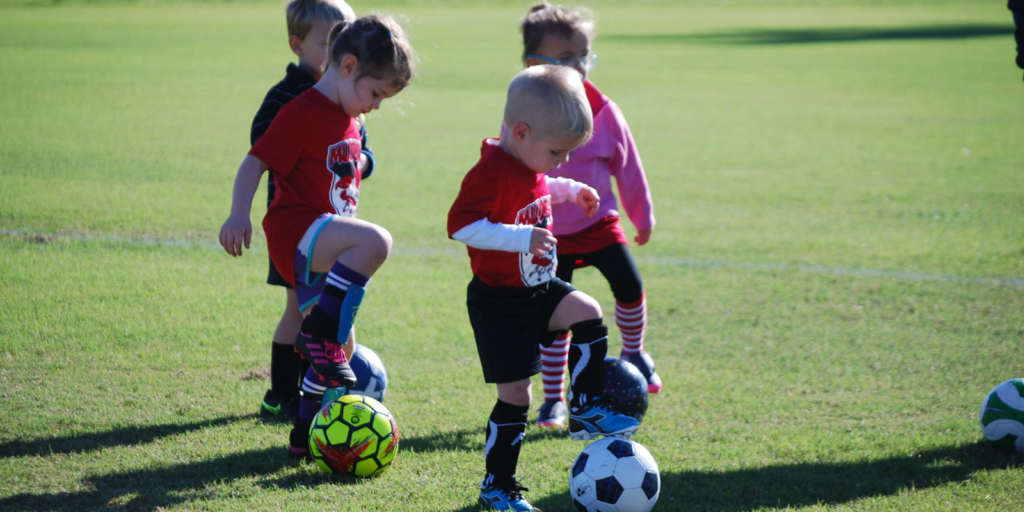
Key Components of Physical Development
Gross Motor Skills
Gross motor skills involve large muscle groups for walking, running, jumping, balancing, and climbing. These are usually the first to develop and are essential for overall mobility and participation in outdoor activities. Children develop these skills through free play, structured physical education, and daily movement routines.
ทักษะการเคลื่อนไหวที่ดี
Fine motor skills refer to smaller, precise movements of the hands and fingers. These include drawing, cutting with scissors, buttoning clothes, and building with small blocks. Mastery of these skills supports school readiness, especially in writing, arts and crafts, and independent dressing.
Sensory and Spatial Awareness
Children must also develop an internal understanding of where their bodies are in space and how to process sensory information. This includes tactile sensitivity, visual-motor coordination, and balance. Issues in this area can lead to problems with attention, behavior, or task completion.
Physical Development Milestones by Age
Understanding typical physical development milestones helps educators and caregivers identify whether a child’s growth aligns with expected patterns. While individual variation is natural, clear benchmarks provide helpful guidance for observing progress in the developmental domains.
| Age Range | Gross Motor Milestones | Fine Motor Milestones |
|---|---|---|
| 0–12 months | Lifts head, rolls over, sits without support, crawls | Reaches for objects, transfers items hand-to-hand, rakes with fingers |
| 1–2 years | Stacks two to four blocks, uses a spoon, scribbles with a crayon | Writes some letters, uses smaller tools with control, and ties his shoes |
| 2–3 years | Stacks two to four blocks, uses spoon, scribbles with a crayon | Runs, jumps with both feet, and begins to kick a ball |
| 3–4 years | Walks independently, begins climbing, and throws a ball | Cuts with scissors, draws shapes, buttons large buttons |
| 5–6 years | Pedal tricycle, balances on one foot briefly, catches the ball | Turns pages, strings large beads, and starts unzipping clothes |
These milestones reflect how domains of development evolve in tandem. For instance, mastering balance and coordination supports physical competence and boosts a child’s self-confidence and participation in group settings, highlighting the interconnection between physical and social-emotional domains.
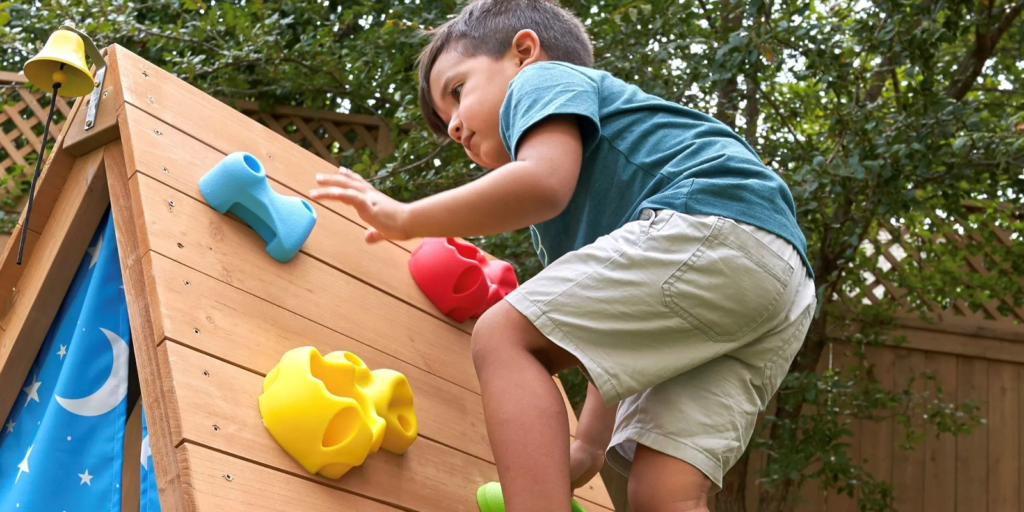
How to Support Physical Development in Early Childhood
The physical development domain evolves rapidly across different stages of childhood. Supporting growth at each level means understanding what is developmentally appropriate and offering the right materials, routines, and challenges. Below is a breakdown of enhancing physical growth across various age groups.
Infants
In infancy, the focus is on building core strength and motor coordination. Tummy time is essential to help strengthen neck, back, and shoulder muscles—key foundations for crawling and sitting. Provide safe floor space with soft mats and age-appropriate toys that encourage reaching, rolling, and grasping. Movement at this stage supports early development across all developmental domains, predominantly sensory and cognitive engagement.
Toddlers/Twos
Children are learning to walk, climb, and carry objects at this stage. Their gross motor skills proliferate as they begin exploring independently. Offer push toys, soft climbing structures, balls, and pull-along items. Fine motor skills can be supported through stacking blocks, turning pages, and simple self-care, like using spoons. Safe, supervised freedom to move supports both physical growth and confidence, laying a strong foundation in the domains of development.
Preschool/Pre-K
Preschoolers need daily opportunities to run, jump, balance, and manipulate objects. Gross motor skills can be developed through games, tricycles, obstacle courses, and outdoor exploration. Encourage drawing, cutting, lacing, and using small tools for fine motor growth. This age benefits from well-structured environments that balance freedom of movement with guided tasks, ensuring the physical development domain grows alongside cognitive and social-emotional development.
School Age
As children grow older, physical development becomes more refined. Activities that require coordination, strength, and precision are ideal. Team sports, dance, yoga, and structured physical education play a role. Fine motor demands increase, with writing, instrument playing, or crafting becoming central. Promoting regular movement breaks and varied physical challenges keeps children active and supports ongoing progress in the developmental domains.
The Cognitive Development Domain
Cognitive development refers to how children think, learn, explore, and solve problems. It is one of the most central developmental domains because it influences how children understand the world, process information, and apply knowledge. Strong cognitive development is the foundation for academic learning and critical thinking throughout life.
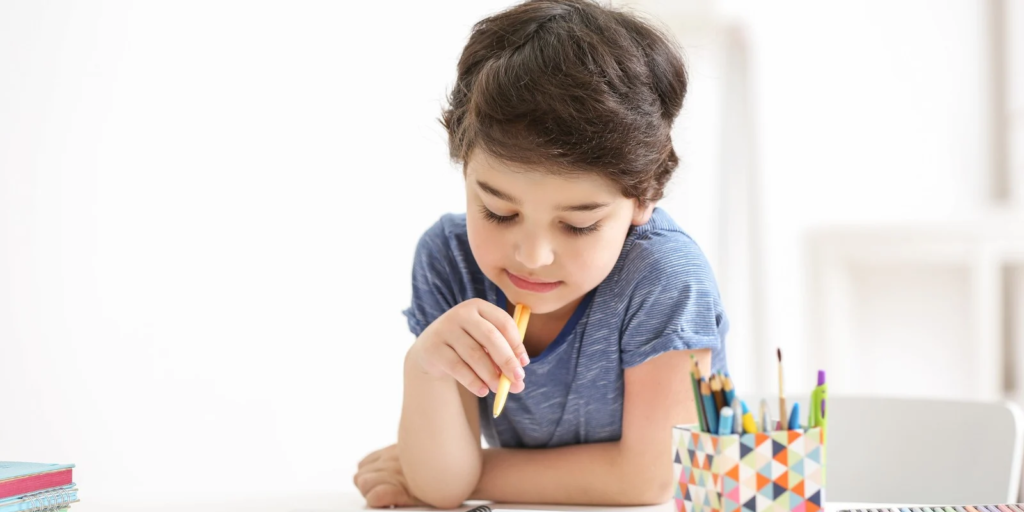
Key Components of Cognitive Development
Attention and Memory
The cognitive development domain’s ability to focus and retain information is a core function. Attention allows a child to engage meaningfully in an activity, while memory enables them to recall prior experiences, which is essential for learning. Activities involving repetition, rhymes, pattern recognition, or storytelling can significantly strengthen these skills from an early age. Simple routines also help build memory by creating predictable sequences that children can anticipate and mentally rehearse.
Problem-Solving and Logical Thinking
Young children naturally experiment to understand how things work. When they stack blocks, turn puzzle pieces, or try different ways to open a box, they’re engaging in complex thinking. These play behaviors support the developmental domains by developing logic, reasoning, and cause-and-effect understanding. As children grow, these early problem-solving attempts become the basis for more advanced tasks like sequencing events or using early math skills.
Symbolic and Imaginative Thinking
Pretend play, drawing, storytelling, and using objects as symbols (e.g., a block as a phone) are essential activities in the cognitive development domain. These actions allow children to externalize their internal thinking, develop abstract reasoning, and practice perspective-taking. Symbolic thinking supports early literacy, as children understand that letters and numbers represent meaning. Imaginative activities also support emotional regulation by allowing children to role-play and process their experiences.
Categorization and Concept Formation
Children begin to group objects based on size, shape, color, and purpose—this is categorization. As they engage in sorting and matching activities, they also develop the ability to form mental concepts and understand similarities and differences. These skills form the basis of critical thinking and decision-making later on. The cognitive development domain uses these early operations to scaffold complex tasks like classifying animals, understanding opposites, and even grasping scientific concepts in school-age years.
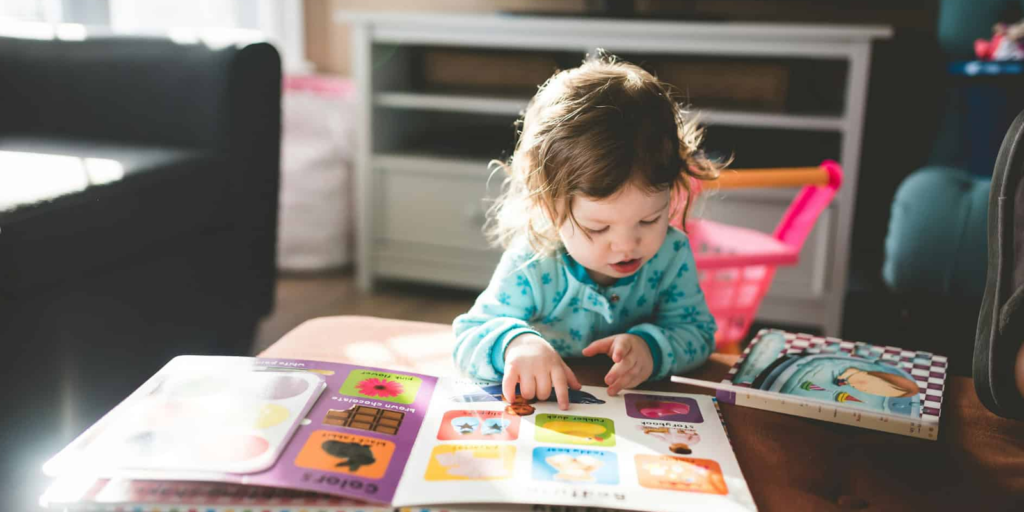
Milestones of Cognitive Development: Piaget’s Four Stages
Renowned developmental psychologist Jean Piaget identified four primary stages of cognitive development that explain how children’s thinking evolves. Each stage reflects how children perceive, process, and engage with their environment.
Sensorimotor Stage (Birth to age 2)
Infants learn through sensory experiences and physical interactions with the world. Object permanence—the understanding that objects still exist when out of sight—emerges during this period.
Preoperational Stage (Ages 2 to 7)
Children begin to use symbols, such as words and images, to represent objects. While imagination and language flourish, thinking remains intuitive and egocentric—they struggle to see things from another’s perspective.
Concrete Operational Stage (Ages 7 to 11)
Children develop logical thinking but are still grounded in concrete concepts. They can perform mental operations like classification, seriation, and conservation (understanding quantity remains constant despite shape changes).
Formal Operational Stage (Age 12 and up)
Abstract reasoning, hypothetical thinking, and deductive logic become possible. Learners can think about moral dilemmas, future planning, and complex problem-solving at this stage.
These stages help educators and families understand where a child may be in their cognitive development domain, guiding age-appropriate expectations and activities.
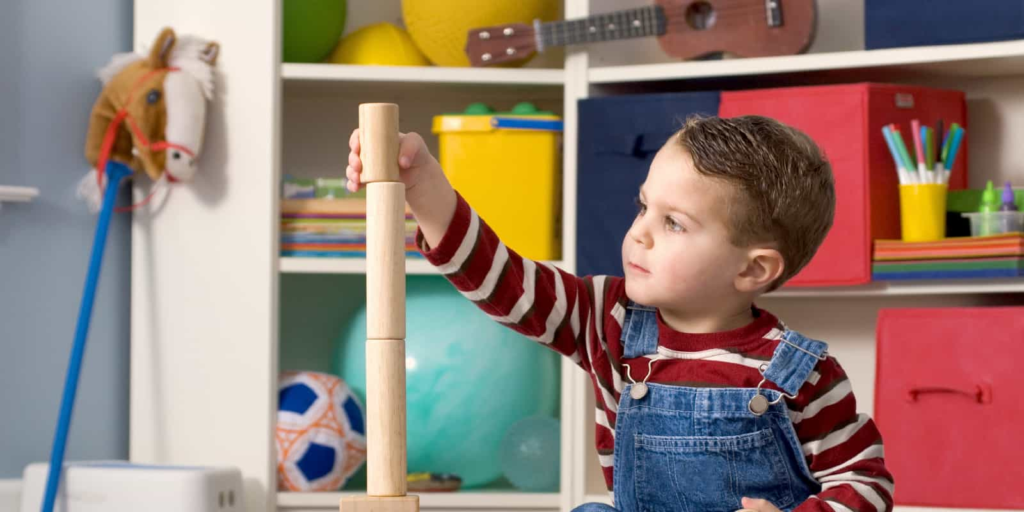
How to Support Cognitive Development in Early Childhood
Infants
Support early cognition by providing cause-and-effect toys like rattles and soft blocks. Peekaboo games, music, and talking to the infant throughout the day help strengthen attention and memory. Repetition and predictability give babies a sense of order and promote early brain development in the domains of development.
Toddlers/Twos
At this stage, children explore through trial and error. Provide puzzles, stacking toys, and matching games. Encourage curiosity by asking simple questions: “What happens if…?” Naming objects and talking through routines builds vocabulary and strengthens neural connections across all developmental domains.
Preschool/Pre-K
Introduce sorting, patterning, counting, and sequencing through games and stories. Pretend play enhances abstract thinking. Activities like building cities from blocks or role-playing a storekeeper support both problem-solving and symbolic thought within the cognitive development domain.
School Age
Support higher-order thinking with board games, science experiments, and open-ended questions. Give tasks that involve planning and following multi-step instructions. Reading comprehension and storytelling build advanced memory and logic, strengthening the child’s place within all domains of development.
The Language Development Domain
Language is the bridge between thought and communication. The language development domain involves how children understand and use language to express their needs, thoughts, and emotions. As one of the five essential developmental domains, language is deeply connected to cognitive growth, social interaction, and learning across all areas.
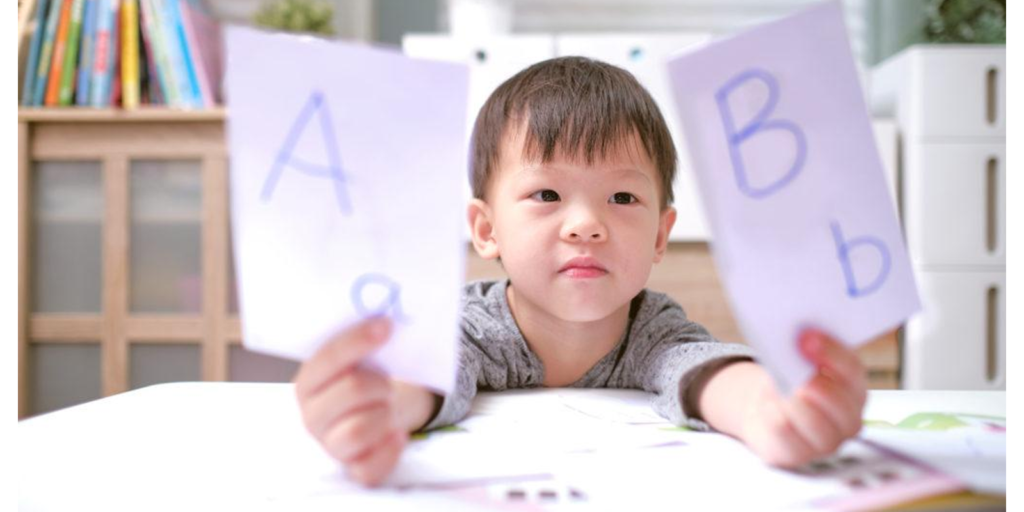
Key Components of Language Development
Receptive Language
Children begin understanding language before they can speak it. Receptive language includes recognizing familiar words, responding to names, and understanding simple instructions. This skill forms the foundation of communication in the language development domain.
Expressive Language
Expressive language involves speaking, gesturing, signing, or writing to convey meaning. It starts with cooing and babbling in infancy and grows into complete sentences and storytelling. Expressive skills allow children to share their ideas and needs, making them central to all developmental domains.
Vocabulary and Word Use
Vocabulary growth is one of the most visible aspects of language development. Early words relate to objects and people, but over time, children begin to use descriptive, functional, and emotional language. A rich vocabulary supports academic readiness and reading comprehension.
Listening and Conversational Skills
Actual language development goes beyond vocabulary, including listening, turn-taking, and responding appropriately. These conversational abilities allow children to engage meaningfully in classroom settings and social environments, tying language directly to the domains of development, such as social-emotional growth.
Language Development Milestones by Age
Tracking progress in the language development domain is critical for understanding a child’s overall growth. Language milestones are typically grouped into receptive and expressive categories, and they often correlate with gains in other developmental domains, such as cognitive or social-emotional development.
| Age Range | Receptive Language Milestones | Expressive Language Milestones |
|---|---|---|
| 0–12 months | Responds to sounds, recognizes name, understands “no” | Coos, babbles, imitates sounds, uses simple gestures (e.g., waving) |
| 1–2 years | Follows simple directions, points to body parts or objects | Uses 10–50 words, combines two-word phrases like “more juice” |
| 2–3 years | Understands simple questions and basic concepts (big/little) | Expands to 200–300 words, starts using 3–4 word sentences |
| 3–4 years | Understands stories, answers “what” and “where” questions | Uses complete sentences, tells short stories, asks many questions |
| 5–6 years | Understands opposites, follows multi-step directions | Uses complete sentences, tells short stories, and asks many questions |
These language development milestones not only help educators and caregivers assess whether a child is developing typically, but also point to broader patterns across other domains of development. For example, delayed expressive language might indicate related social-emotional or adaptive skills challenges, such as frustration tolerance or peer interaction.
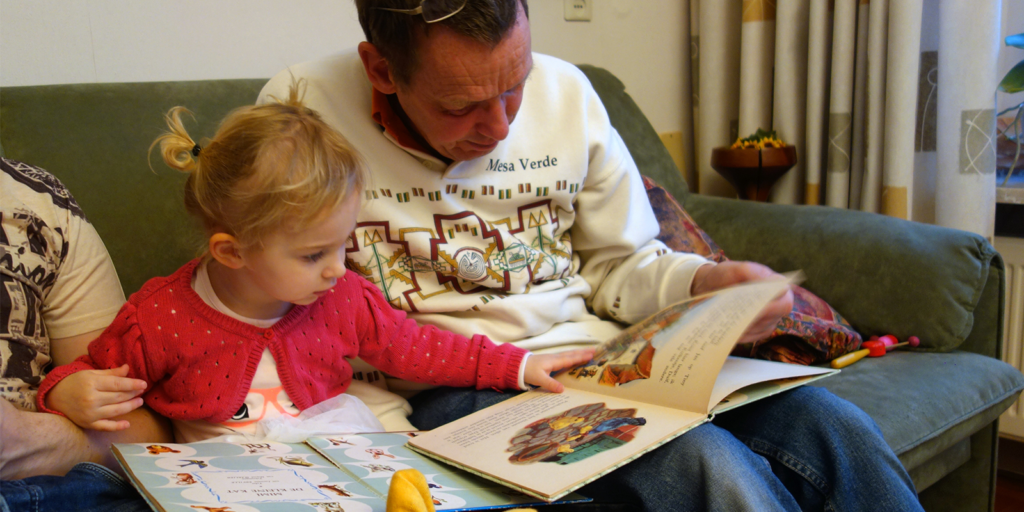
How to Support Language Development in Early Childhood
Infants
Support begins with verbal interaction. Talk to the baby often using simple, clear words. Respond to coos and babbles as if they were part of a conversation. Use songs, rhymes, and expressive facial cues. This builds receptive language and emotional bonds, vital to language development.
Toddlers/Twos
Provide plenty of opportunities to label objects, name actions, and make choices with words. Use books with simple text and repeat common phrases. Encourage children to point, name, and imitate. These early expressive skills lay the groundwork for strong performance across all developmental domains.
Preschool/Pre-K
Children at this stage rapidly expand their vocabulary and begin forming complete sentences. Engage them in storytelling, question-and-answer sessions, and songs. Open-ended questions (“What do you think happens next?”) stimulate higher-level thinking within the language development domain and support early literacy.
School Age
Focus on refining grammar, sentence structure, and narrative skills. Encourage reading aloud, writing short stories, and participating in group discussions. Introduce new vocabulary in context and let children practice explaining ideas or giving instructions—critical for both language and cognitive domains of development.
The Social-Emotional Development Domain
Social-emotional development refers to how children understand emotions, form relationships, and manage their behavior in different settings. It is one of the most sensitive yet foundational developmental domains, influencing how children connect with others, build self-esteem, and participate in group learning environments.
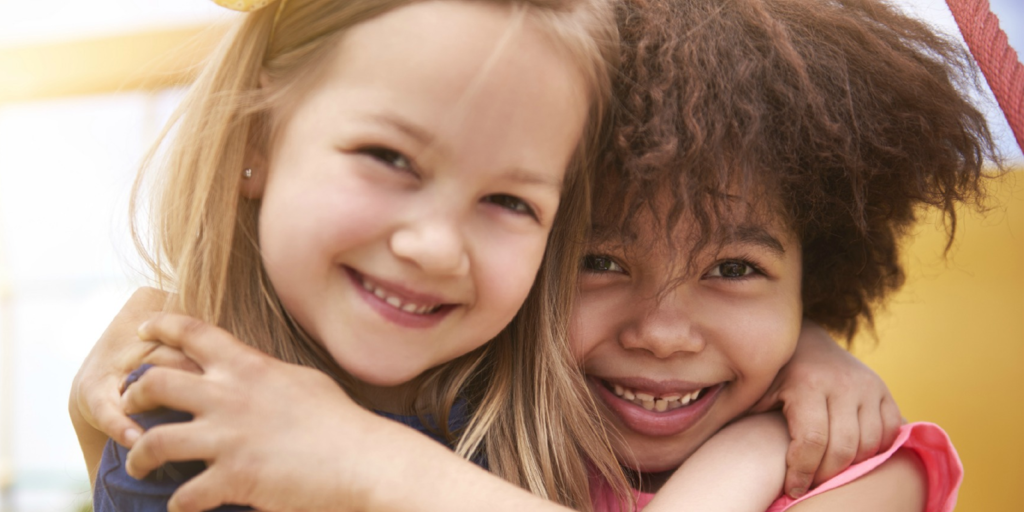
Key Components of Social-Emotional Development
Emotional Recognition and Expression
Children learn to identify emotions in themselves and others. They start by recognizing basic feelings—happy, sad, angry—and gradually develop the ability to name and express more complex emotions like embarrassment or pride. This emotional vocabulary is critical within the social-emotional development domain.
Self-Regulation
This refers to a child’s ability to manage impulses, handle transitions, and cope with disappointment. This process includes strategies like deep breathing, asking for help, or using quiet spaces. Strong self-regulation supports participation in structured learning and connects with all developmental domains.
Relationship Building
Children must learn to cooperate, share, take turns, and resolve conflicts. These skills grow through repeated social experiences, supported by responsive adults. Healthy peer interactions are one of the strongest indicators of progress in the social-emotional development domain.
Empathy and Perspective-Taking
As children mature, they begin to understand how others feel and why. This capacity for empathy supports kindness, teamwork, and moral reasoning, and helps deepen friendships and community involvement.
Social-Emotional Development Milestones by Age
Tracking social-emotional milestones helps educators and caregivers understand how children build relationships, express emotions, and develop behavioral control. These milestones are central to social-emotional development and are deeply interwoven with growth across other developmental domains.
| Age Range | Typical Social-Emotional Milestones |
|---|---|
| 0–12 months | Identifies basic emotions, takes turns with help, begins to understand group rules, and uses words to resolve conflict |
| 1–2 years | Shows preference for familiar caregivers, responds to facial expressions, and begins social smiling |
| 2–3 years | Expresses feelings verbally, shows early empathy, engages in การเล่นร่วมมือ, may struggle with sharing |
| 3–4 years | Demonstrates empathy and fairness, manages emotions more independently, and forms close peer relationships |
| 5–6 years | Expresses feelings verbally, shows early empathy, engages in การเล่นร่วมมือ, and may struggle with sharing |
While each child develops at their own pace, delays in these areas may signal broader challenges across the developmental domains, such as language difficulties (affecting emotion expression) or adaptive skill delays (affecting coping strategies). Early and consistent social-emotional support builds long-term resilience and school readiness.

How to Support Social-Emotional Development in Early Childhood
Infants
Emotional development starts with secure attachment. Respond to cries comfortably, maintain eye contact, and use a soothing tone. These early interactions build trust and form the emotional foundation of all developmental domains.
Toddlers/Twos
Help toddlers label their feelings: “You’re sad because the toy is gone.” Begin teaching basic social rules like “gentle hands” or “we wait our turn.” Use books and puppets to act out emotions and social scenarios. These experiences foster emotional language and early peer awareness.
Preschool/Pre-K
Use group activities to teach cooperation, sharing, and friendship. Role-play situations to practice responses. Provide calm-down areas and visual aids to support self-regulation. Children need consistent adult guidance to navigate more complex emotional situations at this stage.
School Age
Support problem-solving and conflict resolution through peer discussion and reflection. Encourage journaling, open conversations about feelings, and participation in team activities. This deepens empathy and emotional intelligence, two critical skills in the social-emotional development domain.
The Adaptive Development Domain
The adaptive development domain refers to the practical life skills that enable children to function independently in everyday situations. It is one of the most applicable developmental domains, often overlooked but essential to a child’s success in both educational and home settings.

Key Components of Adaptive Development
Self-Care and Hygiene
Children gradually learn to brush their teeth, wash their hands, use the toilet, and care for their grooming needs. These self-care routines are crucial in the adaptive development and are often the earliest signs of independence.
Dressing and Feeding
Using utensils, drinking from a cup, putting on shoes, and managing buttons or zippers are central adaptive milestones. These tasks develop gradually with practice and support and involve physical coordination and cognitive planning.
Routine and Responsibility
Children learn to follow structured routines such as cleaning up toys, packing a bag, or transitioning from one activity to another. This helps them become more responsible and adapt to classroom expectations—a skill that connects with all developmental domains.
Safety and Social Rules
Understanding and following safety instructions (like “don’t touch the stove” or “stay with the group”) also fall under adaptive behavior. As children grow, their ability to recognize danger and act accordingly reflects their maturity.
Adaptive Development Milestones by Age
The adaptive development domain tracks how children develop independence through self-care, responsibility, and following routines. These skills evolve gradually and reflect how well a child is adapting to the expectations of daily life at home, in school, and in the community.
| Age Range | Typical Adaptive Milestones |
|---|---|
| 0–12 months | Starts finger feeding, responds to simple routines (e.g., bedtime), shows preference for familiar objects |
| 1–2 years | Dresses with minimal help, uses the toilet independently, and puts away toys or materials. |
| 2–3 years | Follows simple daily routines, removes some clothing items, washes and dries hands with assistance |
| 3–4 years | Attempts to feed with a spoon, cooperates in dressing, helps with handwashing, and starts toilet training |
| 5–6 years | Dresses with minimal help, uses the toilet independently, and puts away toys or materials |
These adaptive development milestones also intersect with other developmental domains. For example, delays in fine motor skills may affect a child’s ability to button clothes, while cognitive delays can impact their understanding of step-by-step routines. Adaptive development, therefore, is not just about “practical life skills”—it’s a key indicator of overall readiness for independence and learning.

How to Support Adaptive Development in Early Childhood
Infants
Even in infancy, the foundations of adaptive behavior are being formed. Establish predictable routines for feeding, sleeping, and diapering. Allow babies to begin exploring feeding themselves with fingers or soft spoons. Consistency builds trust and supports early development in all developmental domains.
Toddlers/Twos
Encourage toddlers to try dressing themselves, wash their hands with assistance, and use utensils. Set simple routines (e.g., “first we eat, then we clean up”) and offer gentle guidance. Celebrate independence and allow plenty of time for children to attempt tasks themselves.
Preschool/Pre-K
Children in this stage can handle many self-care tasks with minimal help. Provide visual schedules, labeled storage for belongings, and consistent routines. Reinforce responsibility through simple chores like setting the table or organizing supplies. These experiences strengthen the adaptive development domain alongside social and cognitive growth.
School Age
Assign more complex responsibilities, such as preparing simple snacks, packing school bags, or following multi-step directions. Encourage problem-solving: “What do you need to take to school today?” Let children take ownership of daily tasks, building confidence and independence.
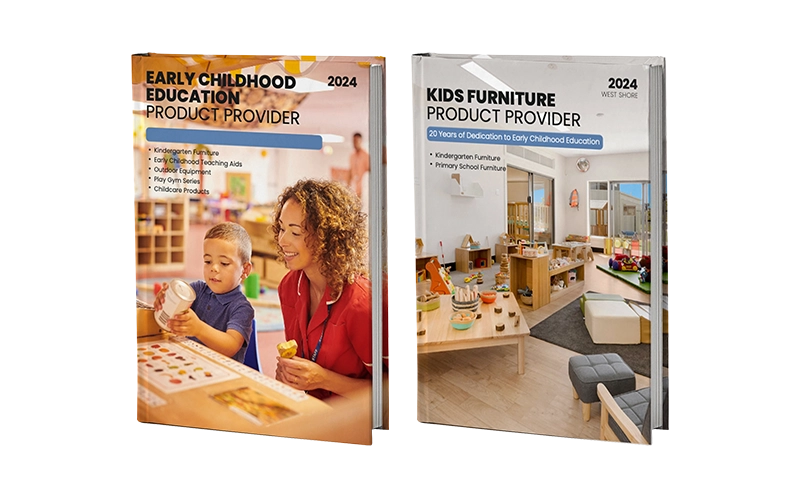
Developmental Delays and Their Causes
In early childhood education, developmental delays refer to a child not reaching expected milestones within one or more developmental domains. These delays can vary widely in severity, may be temporary or ongoing, and often affect a child’s ability to participate fully in daily activities, learning environments, or social interactions.
While some delays are immediately apparent, others emerge gradually. Recognizing them early and providing the proper support can significantly affect a child’s long-term development.

Types of Developmental Delays by Domain
Understanding the five domains of development helps professionals and families identify which areas may need support. Below are the common signs of delay for each domain:
1. Physical Development Delays
The physical development involves gross motor skills (like crawling, walking, running) and fine motor skills (such as grasping small objects or drawing). Delays in this domain often become noticeable during infancy or toddlerhood and can affect a child’s ability to explore, play, and develop independence.
Common signs include:
- Difficulty sitting without support by 9 months
- Not crawling or walking by expected age ranges
- Trouble holding small objects or using utensils
- Poor balance or coordination when running or climbing
2. Cognitive Development Delays
The cognitive development domain relates to a child’s ability to think, solve problems, remember, and understand the world. Delays here may surface as difficulties in understanding basic concepts, cause-and-effect reasoning, or a lack of curiosity.
Common signs include:
- Difficulty understanding cause and effect
- Trouble following simple directions
- Limited interest in exploring or solving tasks
- Struggles with memory or attention span
3. Language Development Delays
The language development domain includes two key components: receptive language (understanding what others say) and expressive language (using words, signs, or gestures to communicate). Delays in this area are among the most common in early childhood and may be observed as early as 12–18 months.
Common signs include:
- No babbling or pointing by 12 months
- Limited vocabulary or inability to form simple sentences by 2–3 years
- Difficulty understanding questions or instructions
- Frustration due to inability to express needs
4. Social-Emotional Development Delays
This domain focuses on how children form relationships, manage emotions, and understand social cues. Delays in the social-emotional domain can significantly impact classroom behavior, cooperation, and emotional resilience.
Common signs include:
- Avoids eye contact or lacks interest in playing with others
- Frequent, intense tantrums or emotional outbursts
- Difficulty understanding others’ feelings or social cues
- Extreme anxiety in new environments or during separation
5. Adaptive Development Delays
The adaptive development domain refers to practical life skills that help children function independently. These include self-care, daily routines, and understanding social rules. Delays here are often first noticed when a child cannot complete age-appropriate tasks without assistance.
Common signs include:
Lack of interest in self-care or personal responsibility
Inability to dress, feed, or toilet independently by age expectations
Difficulty adjusting to routines or transitions
Overdependence on adults for basic tasks
Common Causes of Developmental Delays
Delays can result from a variety of factors, often falling into two categories:
Biological Causes
- Premature birth
- Genetic disorders (e.g., Down syndrome)
- Neurological conditions
- Birth complications or trauma
- Chronic medical conditions
Environmental Causes
- Lack of stimulation or interaction
- Inconsistent caregiving or neglect
- Exposure to toxins (e.g., lead)
- Poor nutrition or unsafe environments
- Trauma, stress, or instability in the home
In many cases, developmental delays result from a combination of biological and environmental factors. Regardless of the root cause, early detection and timely intervention are key.
พร้อมที่จะออกแบบพื้นที่ที่สร้างแรงบันดาลใจในการเรียนรู้หรือยัง ติดต่อเราเพื่อสร้างโซลูชันเฟอร์นิเจอร์ที่ปรับแต่งให้เหมาะกับความต้องการในห้องเรียนของคุณ
Building Strong Partnerships: The Role of Teachers and Families in Supporting Children with Developmental Delays
Supporting children with developmental delays requires more than individual effort—it is a shared responsibility between educators, families, and support professionals. While schools provide structured environments and specialized services, families bring a deep, personal knowledge of their child’s needs, preferences, and daily behavior. In the context of inclusive early childhood education, this collaboration is not just beneficial—it is essential.
A Legal and Professional Framework for Partnership
In many countries, including the United States, the Individuals with Disabilities Education Act (IDEA) ensures that children with disabilities and developmental delays receive a Free Appropriate Public Education (FAPE) in the Least Restrictive Environment (LRE). Central to this law is the idea that parents and educators are equal partners in decision-making. Teachers bring pedagogical expertise and access to interventions, while parents provide critical context and daily feedback that can fine-tune support strategies across all developmental domains.
This partnership becomes particularly vital when consistent, in-person services are disrupted, such as during public health crises or school transitions. Flexibility, clear communication, and shared expectations help maintain support continuity regardless of the setting.
Understanding the Challenge and Sharing the Load
Even in ideal circumstances, parenting a child with developmental delays is a complex and demanding role. Families may manage multiple responsibilities, from physical therapy routines to behavior interventions and academic reinforcement. The expectation to simultaneously serve as a caregiver, teacher, speech therapist, and emotional anchor can be overwhelming.
On the other hand, teachers must balance many learners’ needs within often-limited resources. Without strong collaboration, misalignment can lead to missed opportunities for timely intervention or inconsistent strategies between home and school. The key to success lies in mutual understanding and role clarity.
Practical Ways to Collaborate Effectively
Early collaboration lays the groundwork for effective intervention. When a developmental delay is identified, timely support, known as early intervention, can dramatically improve long-term outcomes across all developmental domains. However, this process doesn’t happen in isolation. It relies on a strong, coordinated partnership between families, teachers, and specialists.
Here are key strategies for building that partnership:
- Establish Open Communication: Use consistent methods of sharing updates, such as daily logs, weekly check-ins, or communication apps. Encourage families to report observable behaviors, new progress, or recurring difficulties. This feedback allows teachers to tailor learning strategies or refer for formal evaluation when necessary.
- Activate Early Intervention Services: Educators and families should act quickly once concerns are noted. Depending on the child’s needs, early intervention may include speech therapy, occupational therapy, physical therapy, or developmental play sessions. Some children may also require special education support plans or ongoing developmental screenings. These services are most effective when coordinated between schools, healthcare providers, and families.
- Co-Create a Support Plan: Teachers and parents should set clear, shared goals that align with the child’s needs across multiple domains of development. These may include milestones like “uses three-word phrases,” “puts on shoes independently,” or “follows two-step directions.” When everyone knows the goals and how to reinforce them, intervention becomes more effective and consistent across environments.
- Use Visual Tools and Daily Routines: Visual schedules, first-then charts, and emotion thermometers help children anticipate transitions and regulate behavior. These methods are particularly effective for children who struggle with adaptive or social-emotional development.
- Adjust the Environment: Create calm, structured learning spaces at school and home. Educators can guide families in setting up sensory-friendly environments, using flexible seating, and providing fidget tools or quiet zones. These supports enhance focus and self-regulation skills that connect directly to multiple developmental domains.
- Celebrate Progress and Adjust Accordingly: Monitor each child’s response to interventions and adjust as needed. Small achievements—whether zipping a jacket, initiating a greeting, or completing a story—deserve recognition. Ongoing progress reviews help maintain momentum and keep support plans relevant.
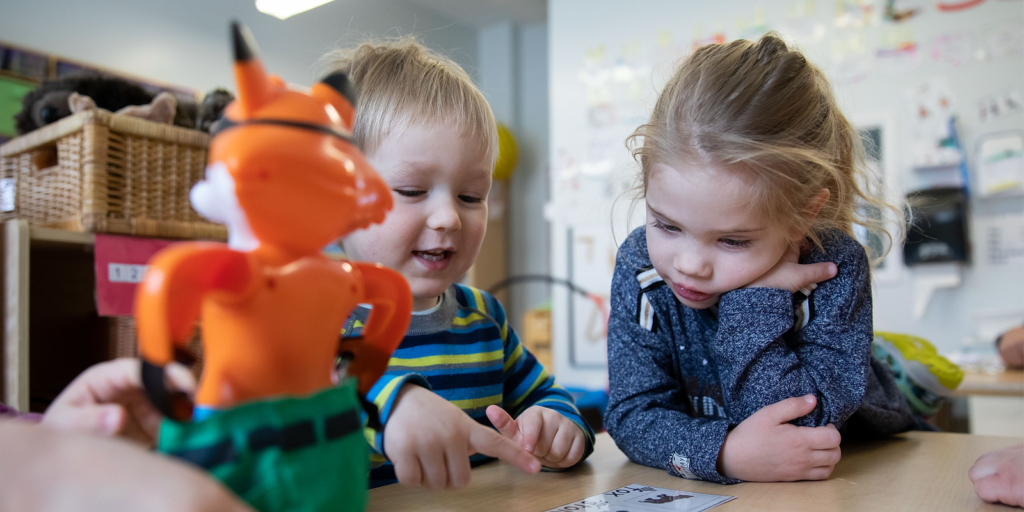
In short, early intervention is not just about services—it’s about shared action. When families and educators collaborate with purpose and urgency, children with developmental delays receive the structured, personalized support they need to thrive across every development domain.
The Role of Regular Assessment in Monitoring Developmental Domain Milestones
Regular assessments help children develop appropriately across the five developmental domains: physical, cognitive, language, social-emotional, and adaptive. These assessments provide measurable insights into whether a child is meeting age-expected milestones or showing signs of delay.
Key Benefits of Regular Assessments:
- Early Identification: Detects developmental delays before they impact learning or behavior.
- Targeted Support: Educators can tailor activities and interventions to the child’s needs.
- Progress Tracking: Measures growth over time across all domains of development.
- Collaborative Understanding: Combines teacher observations with family input for a complete developmental profile.
Common Assessment Tools:
- Ages & Stages Questionnaire (ASQ): Tracks progress in motor, language, problem-solving, and social skills.
- Observational Checklists: Teachers use these to monitor behavior and skill acquisition during daily routines.
- Child Portfolios: Collect work samples and documentation that show growth across multiple domains.
By embedding assessments into everyday activities and reviewing results consistently, educators can respond early and appropriately to any gaps in development.
Why No Developmental Domain Stands Alone: The Hidden Links That Shape a Child’s Growth
Though each of the five developmental domains—physical, cognitive, language, social-emotional, and adaptive—represents a distinct aspect of child development, they are deeply interconnected in practice. Children grow as whole beings, not in isolated parts. Progress in one domain often supports others, while delays in a single area can have cascading effects.
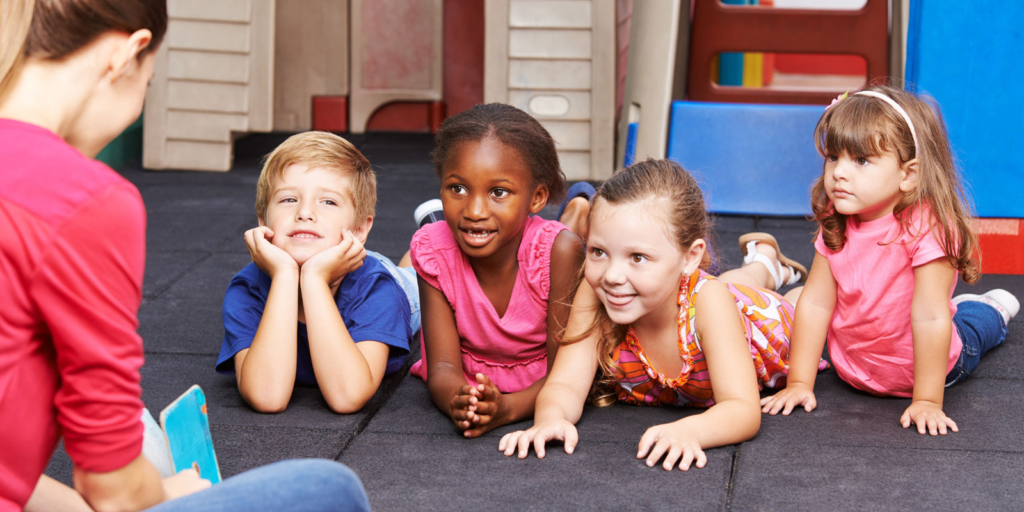
ตัวอย่างเช่น:
- A child with underdeveloped fine motor skills (physical domain) may struggle with holding a pencil, directly impacting early writing and drawing tasks (cognitive domain).
- Limited vocabulary or delayed speech (language domain) can make it difficult for a child to express emotions, sometimes resulting in frustration or behavioral outbursts (social-emotional domain).
- Difficulties with emotional regulation (social-emotional domain) may affect a child’s ability to adapt to group routines or engage in self-help tasks like dressing or eating independently (adaptive domain).
- On the positive side, strong problem-solving and memory skills (cognitive domain) often lead to quicker language acquisition and more sophisticated sentence construction (language domain).
Educators, families, and program designers must always consider this dynamic relationship between the domains of development. A balanced, responsive learning environment should aim to support all domains in harmony, not in silos.
How to Promote a Holistic Approach to Development?
A holistic approach to development means viewing children as whole beings, not fragmented parts. Rather than focusing on one developmental area in isolation, it emphasizes the interconnectedness of the developmental domains—physical, cognitive, language, social-emotional, and adaptive—and seeks to support them simultaneously and intentionally.
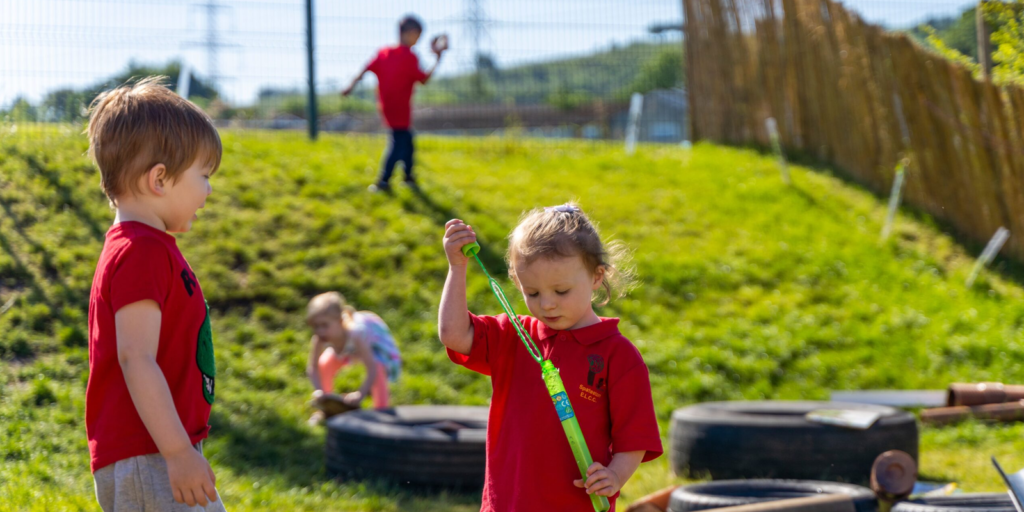
1. Design Integrated Learning Experiences
Activities should engage multiple domains of development at once. For example:
- In one lesson, a storytelling activity that includes drawing, retelling, and group discussion builds language, cognitive, fine motor, and social-emotional skills.
- Cooking in the classroom develops adaptive routines, fine motor control, sequencing (cognitive), and cooperation.
These integrated experiences reflect how real life develops—fluidly, not in isolated blocks.
2. Prioritize Relationships and Emotional Safety
Strong teacher-child relationships form the foundation for development across all domains. Emotional security enables risk-taking in learning, social interaction, and self-help tasks. Children learn best when they feel seen, heard, and respected.
- Use consistent routines and positive behavior guidance
- Acknowledge children’s emotions and help name them
- Foster peer-to-peer interaction through structured play
This strengthens the social-emotional development domain, which in turn supports all others.
3. Support Individual Differences
A holistic approach is not one-size-fits-all. Each child has a unique developmental path. Educators must observe closely and adapt learning opportunities to support strengths and challenges across all domains of development.
- Provide differentiated materials and flexible goals.
- Use child portfolios to track growth in all areas.
- Work closely with families to build consistent support between home and school.
บทสรุป
Understanding the five developmental domains—physical, cognitive, language, social-emotional, and adaptive—is not just about tracking a child’s growth. It’s about making informed, intentional decisions that shape the learning environment, the curriculum, and the interactions that guide early development. Each domain offers a window into a child’s unique needs and potential, and when educators, families, and systems collaborate with purpose, the results are transformative.
High-quality early childhood education doesn’t happen by chance. It is built—sometimes quite literally—on frameworks that align with child development theory. From domain-based observation tools to the physical setup of the learning space, every choice matters. That’s why programs that succeed long-term often work closely with specialized partners—those who understand that furniture is not just furniture, but an extension of pedagogy. Manufacturers like เวสท์ชอร์เฟอร์นิเจอร์, who design early learning environments with these developmental needs in mind, play a quiet but critical role in helping educators implement what matters most. Because when every shelf, chair, and table is created to serve the realities of child development, children don’t just sit—they grow.
Ultimately, supporting children across all developmental domains requires vision, strategy, and deep respect for the complexity of early learning. The tools we use, the environments we build, and the relationships we cultivate all contribute to whether a child passes through a classroom or thrives in it.
คำถามที่พบบ่อย
1. What is the difference between the 3 domains of development and the 5 domains of development?
The three domains—cognitive, affective, and psychomotor—are typically used in educational psychology to describe how people learn. The five domains of development—physical, mental, language, social-emotional, and adaptive—are used in early childhood development to describe how children grow.
2. Which core domain includes lifelong learning and skill development?
The cognitive development domain is most closely associated with lifelong learning, thinking, problem-solving, and acquiring knowledge and skills over time.
3. What domain includes cognitive ability and knowledge retention?
These are key cognitive development functions, which cover memory, reasoning, understanding, and mental processing.
4. Is ‘approaches to learning’ considered a developmental domain?
While not a core domain, approaches to learning, such as curiosity, persistence, and problem-solving attitude, are often treated as a cross-domain factor influencing all five developmental domains, primarily cognitive and social-emotional.
5. How does the affective domain differ from the cognitive domain?
The affective domain involves emotions, attitudes, and social behaviors, while the cognitive domain focuses on intellectual functions like thinking, reasoning, and memory.
6. How does physical development fit into the developmental domains?
Physical development is one of the five core developmental domains, encompassing gross and fine motor skills. It supports children’s ability to explore, interact, and participate in daily tasks, forming the foundation for independence and learning readiness.
7. Why is social and emotional development important for children?
Social-emotional development helps children build relationships, understand emotions, and regulate behavior. It supports cooperation, empathy, and confidence—skills essential for classroom success and lifelong mental well-being.
8. Are the developmental domains universal across cultures?
The five developmental domains are universal, but the timing, expression, and emphasis of development can vary by culture. For example, some cultures may prioritize group harmony (social-emotional) over verbal expression (language), shaping how milestones are viewed.
9. How are developmental domains assessed in early childhood education?
Educators assess developmental domains through observation, checklists, screenings, and family input. Tools such as ASQ (Ages & Stages Questionnaire) or standardized assessments help track milestones and identify any delays early.





